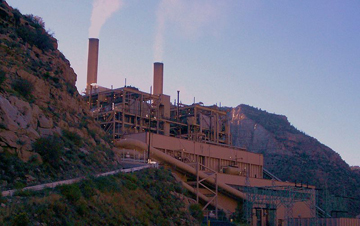- A new report from civil and environmental organizations highlights the top 20 banks that spend the most money on coal, the world’s most carbon-intensive fossil fuel.
- Released as officials from around the world meet for the 17th UN Summit on Climate Change in Durban, South Africa, the report investigated the funding practices of 93 major private banks, finding that the top five funders of big coal are (in order): JPMorgan Chase, Citi, Bank of America, Morgan Stanley, and Barclay’s.
A new report from civil and environmental organizations highlights the top 20 banks that spend the most money on coal, the world’s most carbon-intensive fossil fuel. Released as officials from around the world meet for the 17th UN Summit on Climate Change in Durban, South Africa, the report investigated the funding practices of 93 major private banks, finding that the top five funders of big coal are (in order): JPMorgan Chase, Citi, Bank of America, Morgan Stanley, and Barclay’s.
Funding from the top 20 banks (see list below) represents 44 percent of the world’s coal production and half of coal-fired energy.
“We chose to look into coal financing as coal-fired power plants are the biggest source of man-made CO2 emissions and the major culprit in the drama of climate change,” explains Heffa Schuecking of urgewald, an environmental group. “In spite of the fact that climate change is already having severe impacts on the most vulnerable societies, there is an abundance of plans to build new coal-fired power plants. If banks provide money for these projects, they will wreck all attempts to limit global warming to 2 degrees Celsius.”
 Castle Gate coal-fired power plant in Utah. Nearly half of the US’s electricity is from coal, the most carbon intensive energy. Photo by: David Jolley. |
Coal producers rely on banks for funding given the massive cost to build a new coal plant. However, the study only looks at private banks, while significant funding for coal also comes from public banks. Recently the World Bank has announced it is taking another look at its funding practices in relation to coal.
“Our figures clearly show that coal financing is on the rise,” notes Tristen Taylor of Earthlife Africa Johannesburg. “Between 2005 and 2010, coal financing almost doubled. If we don’t take banks to task now, coal financing will continue to grow.”
Not only is burning coal one of the most significant inputs of global greenhouse gas emissions, coal also has impacts on human health and on water and land pollution. A recent study found that the hidden environmental and health costs of coal on US society reached $523 billion annually—that’s $1,698 per person in the US every year.
“This is not borne by the coal industry, this is borne by us, in our taxes,” Paul Epstein the study’s lead author, told Reuters at the time. “The public cost is far greater than the cost of the coal itself. The impacts of this industry go way beyond just lighting our lights.”
The Top Twenty Coal-Funding Banks
| Rank | Bank | $ billion for coal financing since 2005 |
| 1 | JPMorgan Chase | $22,329 |
| 2 | Citi | $18,564 |
| 3 | Bank of America | $16,997 |
| 4 | Morgan Stanley | $16,358 |
| 5 | Barclays | $15,544 |
| 6 | Deutsche Bank | $15,494 |
| 7 | Royal Bank of Scotland | $14,777 |
| 8 | BNP Paribas | $14,437 |
| 9 | Credit Suisse | $12,818 |
| 10 | UBS | $11,093 |
| 11 | Goldman Sachs | $9,140 |
| 12 | Bank of China | $8,536 |
| 13 | Industrial and Commercial Bank of China | $8,346 |
| 14 | Crédit Agricole / Calyon | $7,610 |
| 15 | UniCredit / HVB | $7,062 |
| 16 | China Construction Bank | $6,899 |
| 17 | Mitsubishi UFJ Financial Group | $6,723 |
| 18 | Société Générale | $6,402 |
| 19 | Wells Fargo | $6,106 |
| 20 | HSBC | $5,983 |














